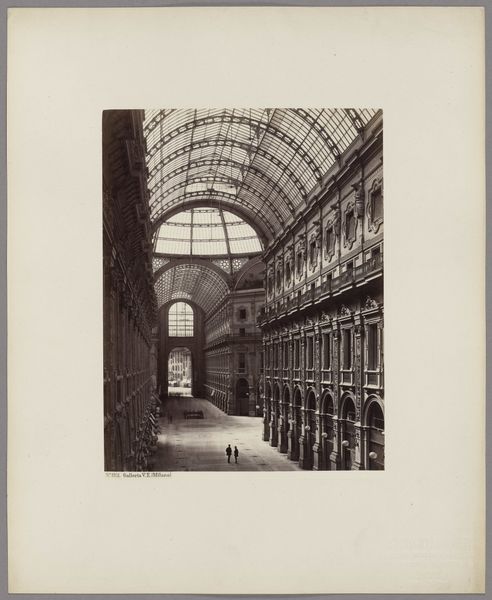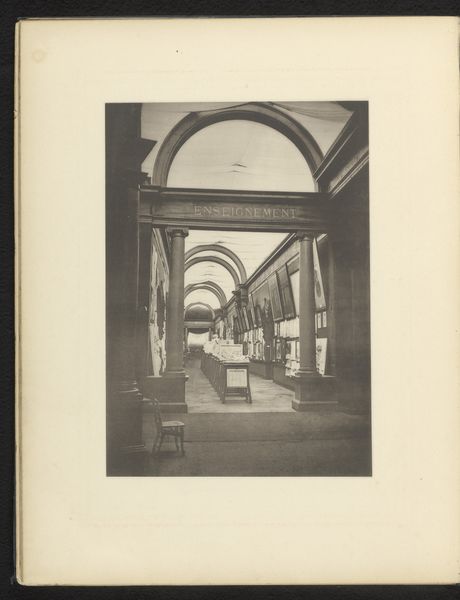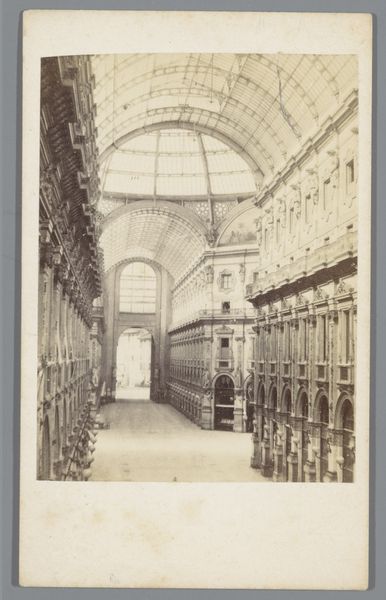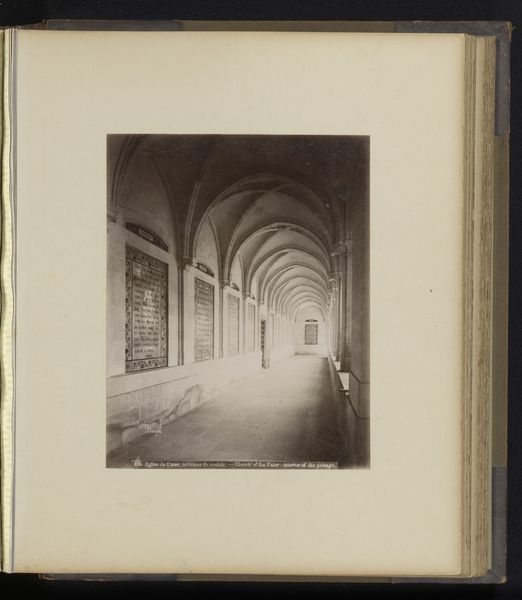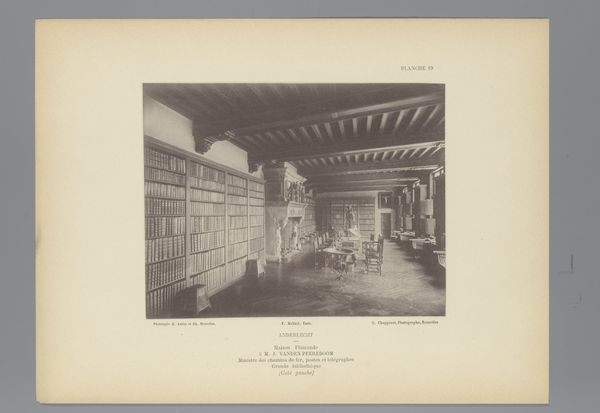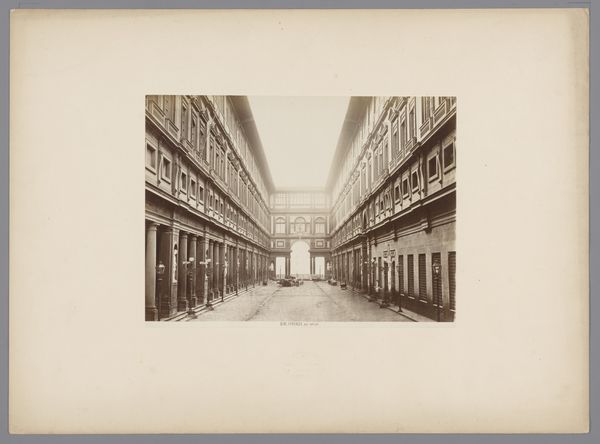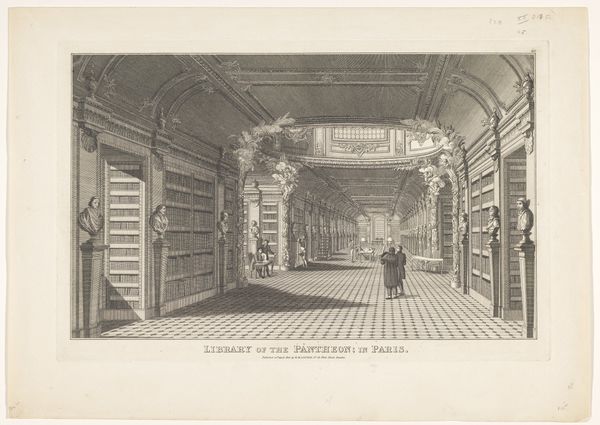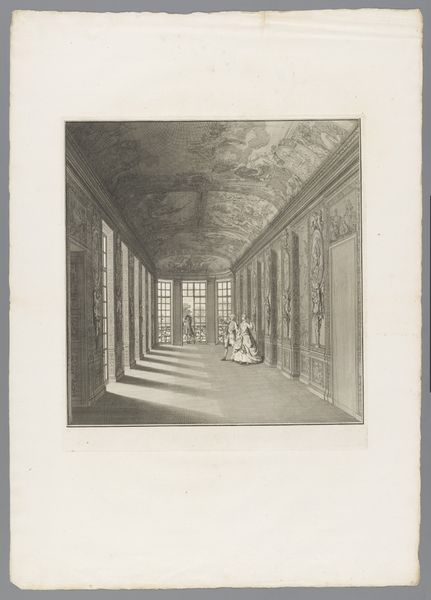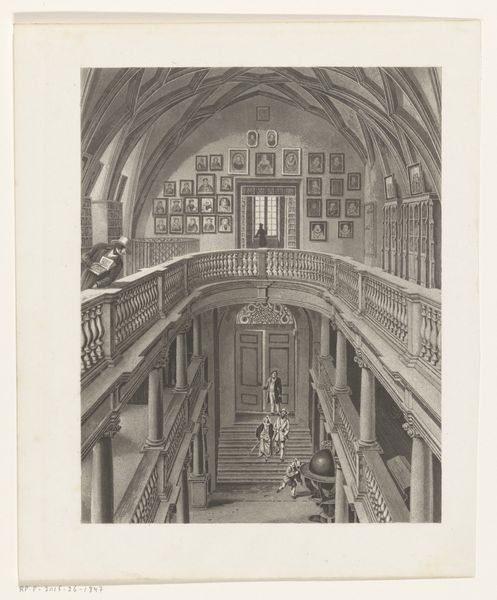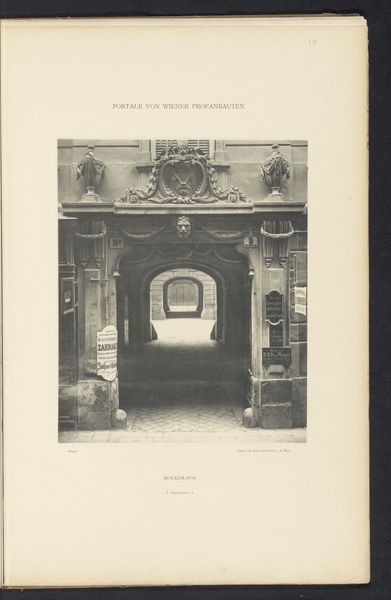
print, photography
# print
#
photography
#
cityscape
#
italian-renaissance
Dimensions: height 473 mm, width 353 mm
Copyright: Rijks Museum: Open Domain
Curator: What strikes me first about this photograph is the sense of vast, elegant emptiness. It’s almost dreamlike. Editor: It certainly is evocative. This is a print, a photograph taken by Giacomo Brogi between 1878 and 1881. It depicts the interior of the Galleria Vittorio Emanuele II in Milan. Beyond just its aesthetic qualities, this image speaks to the rise of urban spectacle and public space in the late 19th century. Curator: Yes, and it highlights that tension – the simultaneous invitation and alienation that can be found in such grandiose public spaces. Two figures walk down the center, but are dwarfed by the architecture. Do they feel a sense of empowerment, or are they consumed by this temple to consumerism and national pride? Editor: The Galleria itself was a symbol of a newly unified Italy, meant to showcase progress and modernity. Brogi, as a commercial photographer, would have understood that context, playing a direct role in the construction of that national narrative by creating these images. The symmetry, the light flooding in through the glass roof, it all presents a very particular vision. Curator: Right, the soaring glass roof is meant to be a feat of engineering, yes, but it also seems to visually embody aspirations, literally looking up and into the sky as you wander the space. And photography itself was still a relatively new technology – Brogi isn't simply capturing reality; he's shaping perception. Who was this space *for*, really? Editor: That's always the critical question. Certainly, it's meant to project an image of Italian sophistication and progress to the rest of Europe. But locally, you would have the rising merchant class utilizing such spaces as essential infrastructure for economic activity, which then dictates a rigid hierarchy to visitors and even pedestrians. The building itself acted as an institution with immense control of culture and social behavior. Curator: Exactly. Brogi’s photo memorializes all the power structures built into even public spaces, like unspoken instructions that shape a very prescribed type of Italian experience, so different from the street-level perspective from below. Editor: Looking at it through a modern lens, it becomes more than just a pretty picture; it becomes a document of societal ambition.
Comments
No comments
Be the first to comment and join the conversation on the ultimate creative platform.
